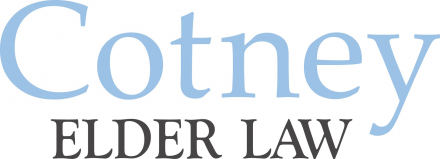 The centerpiece of the $2 trillion Coronavirus Aid, Relief, and Economic Security (CARES) Act, signed into law March 27, 2020, is its one-time $1,200 payments to millions of eligible individuals. When can you expect your payment and how much will it be? The answer to the first question has been changing on an almost daily basis, but finally seems to have come into focus. Here’s the latest word.
The centerpiece of the $2 trillion Coronavirus Aid, Relief, and Economic Security (CARES) Act, signed into law March 27, 2020, is its one-time $1,200 payments to millions of eligible individuals. When can you expect your payment and how much will it be? The answer to the first question has been changing on an almost daily basis, but finally seems to have come into focus. Here’s the latest word.
How Much Will You Receive, If Anything?
Under the bill, one-time checks in the amount of $1,200 will go to individuals ($2,400 for couples who filed joint taxes) who earned less than $75,000 ($150,000 for joint filers) on their most recent tax returns, which is either the person’s 2018 or 2019 returns, depending on if they have already filed for this year. Individuals earning up to $99,000 ($198,000 for joint filers) will receive smaller relief checks. Families are entitled to an additional $500 per child under age 17 in the household. The bill also increases weekly unemployment payments by $600 per week for four months.
When Can You Expect the Money?
Those people for whom the Internal Revenue Service (IRS) has direct deposit information will receive their relief money quickest. The first wave of direct deposits went out on April 11, starting with low- and middle-income earners. How long it takes for the funds to hit your account depends on how long it takes your bank to process direct deposits.
What If the IRS Doesn’t Have Direct Deposit Information for You?
The IRS has direct deposit information for only a minority of relief payment recipients. Those who don’t have deposit information on file have two options: they can wait for their paper check to arrive – which could take a long time – or they can enter their direct deposit information using a new portal the IRS just set up.
Those who don’t provide their bank information to the IRS can expect to receive paper checks, which may take up to 20 weeks to arrive. In other words, some needing quick financial relief may not get their money until September. The IRS is expected to begin issuing paper checks on April 20, with about 5 million checks mailed per week. Checks will be prioritized to reach low-income earners first.
If you filed a tax return, your check will be issued automatically to the address the IRS has on file for you and you don’t have to do anything to get it. If you haven’t filed a tax return this year, you should do so as soon as possible so you can receive any relief payment coming to you.
What About Those Who Don’t File Tax Returns?
Initially, the IRS declared that it would have to have a tax return on file for anyone receiving a relief payment. Many low-income people, however, do not file tax returns because they simultaneously earn too little and lack sufficient employment history to be eligible for a refund. This population includes some of the most vulnerable to the coronavirus — the elderly and people with disabilities. It is estimated that more than 15 million Social Security beneficiaries did not file tax returns last year.
After protests from AARP, lawmakers, seniors, and other advocacy groups, the IRS reversed course and said that Social Security retirement and disability recipients, some veterans, and many others who don’t file tax returns would automatically receive their checks using information the IRS gleans from Form 1099. However, that still left plenty of people who don’t receive 1099s – including recipients of Supplemental Security Income (SSI) and veterans disability compensation — out to dry because they don’t receive 1099 forms. A few days later, the IRS announced its new non-filers portal, where recipients can enter pertinent information to receive their checks.
According a Social Security Administration notice issued on April 10, “people who receive Social Security retirement, survivors, or disability insurance benefits and who did not file a tax return for 2018 or 2019 and who have qualifying children under age 17 should now go to the IRS’s webpage to enter their information instead of waiting for their automatic $1,200 Economic Impact Payment. By taking proactive steps to enter information on the IRS website about them and their qualifying children, they will also receive the $500 per dependent child payment in addition to their $1,200 individual payment. If Social Security beneficiaries in this group do not provide their information to the IRS soon, they will have to wait to receive their $500 per qualifying child.”
What About Those Who Lack Internet Access?
Not everyone, especially low-income people, has access to a computer and the Internet, and so won’t be able to fill out the form on the IRS portal. The IRS has not yet announced a solution for these people.
You Can Check Your Relief Payment’s Status
On April 17, the IRS plans to launch a “Get My Payment” Web tool where relief payment recipients will be able to check the status of their payment and when it is expected to arrive via direct deposit or mail. If you filed a tax return in 2018 or 2019 and didn’t sign up to receive a refund via direct deposit (or didn’t receive a refund at all), you’ll be able to provide your bank information to the IRS using this Web tool, in addition to the non-filers portal the agency previously set up.




